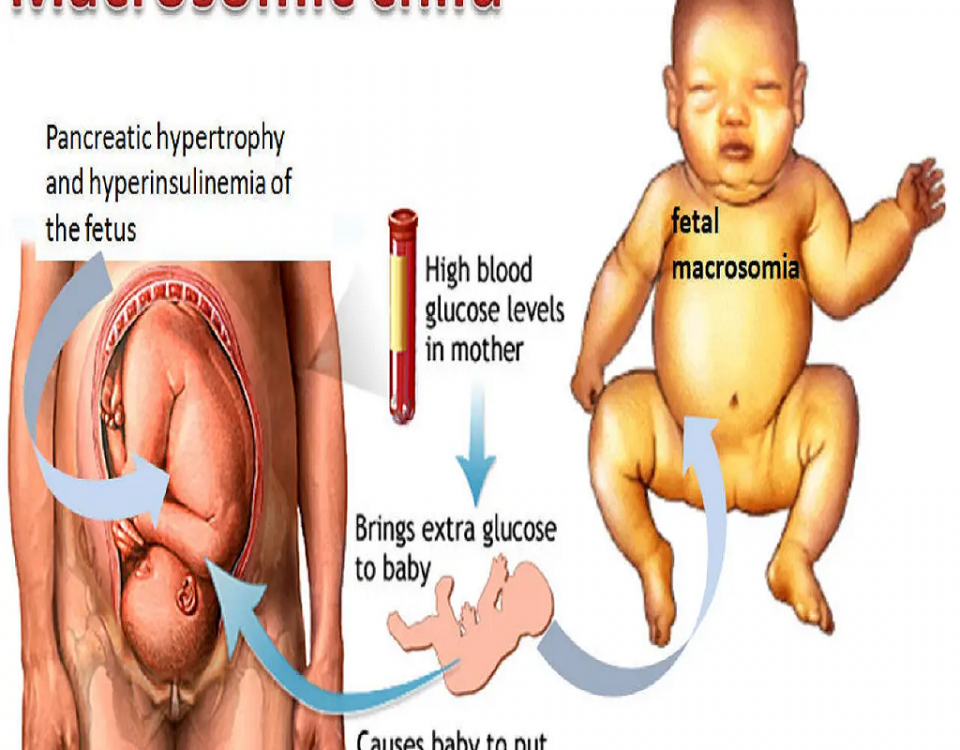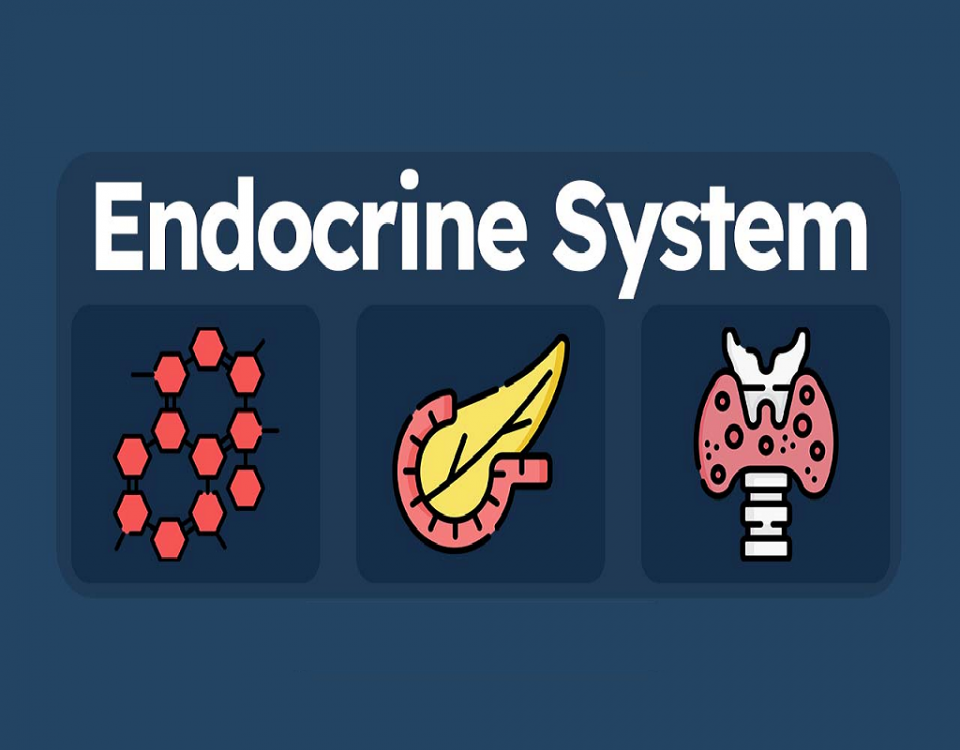
سندروم استیکلر
دی ۱۵، ۱۴۰۲
بیماری های خودایمنی
دی ۱۵، ۱۴۰۲فهرست داروهای مصرفی در طب نوزادان : براساس کتاب فاناروف ویرایش هشتم
Appendix A Therapeutic Agents
| AGENT | DOSAGE | COMMENTS | |
| Adrenergic Blockers, Inotropes, and Pressors | |||
| Dobutamine | 2–20 μg/kg/min IV | Titrate dose to target effect; in young infants increased heart rate may occur; tolerance may develop with prolonged use (> 3 days). | |
| Dopamine | 0.5–3 μg/kg/min IV | “Renal dose” to promote splanchnic bloodflow and cortical redistribution of renal bloodflow | |
| 3–8 μg/kg/min IV | Cardiotonic dose; pharmacodynamic response similar to dobutamine | ||
| > 8 μg/kg/min IV | Pressor dose; both direct and indirect vasoconstrictive action | ||
| Epinephrine | 1:10000 aqueous solution | May repeat | |
| 0.1–0.3 mL/kg/dose IV, intratracheal (followed by 1 mL NS) or intracardiac | |||
| 1:1000 solution for drip preparation | Continuous ECG and blood pressure monitoring necessary | ||
| 0.05–1 μg/kg/min IV | |||
| Isoproterenol | 0.05–2 μg/kg/min IV | Continuous ECG and blood pressure monitoring essential to prevent hypotension and tachycardia | |
| Milrinone | Loading dose: 50 to 75 μg/kg IV over 60 min | Has both inotropic and vasodilatory properties; hypotension more likely with bolus doses | |
| Begin infusion at 0.5 μg/kg/min. May titrate to 0.75 μg/kg/min | |||
| Analgesics and Narcotics | |||
| Acetaminophen | 10–20 mg/kg every 6–8 h PO, PR | Higher doses may be required for pain relief. | |
| Fentanyl | 1–4 μg/kg IV, may be repeated as needed | Synthetic opioid; may cause chest wall rigidity at high doses | |
| Continuous IV infusion: 1–5 μg/kg/h | |||
| Methadone | 0.05–0.2 mg/kg/dose every 12–24 h PO | Reduce dose based on signs and symptoms of withdrawal | |
| Morphine | 0.05–0.2 mg/kg/dose repeated every 3–4 h IV, IM as needed | Paregoric not recommended as it contains alcohol and benzoic acid | |
| Antiarrhythmic Agents | |||
| Adenosine | Give 50 μg/kg as a rapid IV bolus followed by a flush. If there is no response in 1–2 min, double the dose and continue to double it every 1–2 min until a response is obtained. (Usual maximum dose of 250 μg/kg) | Adenosine is an endogenous substance that may be used to treat SVT. It is virtually universally effective. The effect may be temporary, so it must be followed up by the use of a more long-acting agent such as digoxin. | |
| Amiodarone | Loading dose: 5 mg/kg IV over 30–60 min | For treatment of refractory supraventricular arrhythmia. | |
| IV infusion: Start at 7 μg/kg/min, may increase to 15 μg/kg/min | Long elimination half-life; may cause hypothyroidism and corneal microdeposits; may increase plasma concentrations of digoxin and phenytoin | ||
| PO: 5–10 mg/kg/dose every 12 h | |||
| Digoxin | Premature: | Oral doses (elixir) are 75% as effective as IV doses. Based on pharmacokinetics, maintenance dose may be given once daily. Serum concentration monitoring in infants may be erroneous because of the presence of an endogenous digoxin-like substance. | |
| Loading dose: | |||
| IV 15–20 μg/kg divided into 3 doses over 24 h | |||
| PO 20–25 μg/kg divided into 3 doses over 24 h | |||
| Maintenance dose: | |||
| IV 4–5 μg/kg daily | |||
| PO 5–6 μg/kg daily | |||
| Full term: | |||
| Loading dose: | |||
| IV 30–40 μg/kg divided into 3 doses over 24 h | |||
| PO 40–50 μg/kg divided into 3 doses over 24 h | |||
| Maintenance dose: | |||
| IV 4–5 μg/kg every 12 h | |||
| PO 5–6 μg/kg every 12 h | |||
| Lidocaine | 0.5–1 mg/kg/dose by slow IV push; may be repeated every 10 min as needed; maintenance IV infusion: 10–50 μg/kg/min | Side effects include hypotension, seizures, respiratory arrest, and asystole | |
| Sotalol | 1 mg/kg PO every 12 h, may increase to 4 mg/kg every 12 h | For tetralogy spells; indicated for ventricular arrhythmias; has properties that prolong both beta blockade and action potentials | |
| Antibacterials | |||
| For many of these drugs, exact dose and dosing interval are dependent on postmenstrual age and postnatal age. | |||
| Amikacin * | 15–18 mg/kg/dose every 24–48 h | Serum concentrations should be monitored and dosage adjusted to achieve peak concentrations | |
| Ampicillin | For meningitis: 100 mg/kg/dose IV, IM every 6–12 h | ||
| For other infections: 25–50 mg/kg/dose IV, IM every 6–12 h | |||
| Cefazolin † | 25 mg/kg/dose IV, IM every 6–12 h | ||
| Cefotaxime[†] | 25–50 mg/kg/dose IV, IM every 6–12 h | Broad-spectrum cephalosporin; may be useful for gram-negative meningitis | |
| Ceftazidime[†] | 30 mg/kg/dose IV, IM every 8–12 h | Broad-spectrum cephalosporin; only antipseudomonal cephalosporin; may be useful for gram-negative meningitis | |
| Ceftriaxone[†] | 50–100 mg/kg IV, IM as a single daily dose | Highly potent against group B streptococci, pneumococci, Staphylococcus aureus, Haemophilus influenzae, Escherichia coli, Klebsiella, and Serratia; high CSF activity and resistance to degradation by β-lactamases. Not recommended for infants with hyperbilirubinemia. | |
| Chloramphenicol | Loading dose: 20 mg/kg IV over 30 min | Serum concentrations should be monitored, concentrations > 50 μg/mL associated with “gray baby syndrome”; can cause bone marrow suppression, aplastic anemia. | |
| Maintenance dose (give 12 h after loading dose) | |||
| Premature < 1 month old: 2.5 mg/kg IV every 6 h | |||
| Full term < 1 week old, premature > 1 month old: 5 mg/kg IV every 6 h | |||
| Full term > 1 week old: 12.5 mg/kg IV every 6 h | |||
| Clindamycin | 5–7.5 mg/kg/dose IV, PO every 6–12 h | ||
| Erythromycin | 10–12.5 mg/kg/dose PO every 6 h | Higher dose used to treat pertussis and Chlamydia pneumonitis and conjunctivitis | |
| Gentamicin[*] | 4–5 mg/kg/dose every 24–48 h IV | Serum concentrations should be monitored and doses adjusted to achieve peak concentrations of 8–10 μg/mL and trough concentrations of ≤ 2 μg/mL. Rarely, individuals may have a genetic susceptibility to gentamicin ototoxicity due to a mitochondrial DNA mutation. | |
| Meropenem | Sepsis: 20 mg/kg/dose IV every 12 h | Very broad spectrum antibiotic | |
| Meningitis and infections with Pseudomonas: 40 mg/kg/dose every 8 h | |||
| Nafcillin | 25–50 mg/kg/dose IV every 6–12 h | Greatest CSF penetration of isoxazolyl (antistaphylococcal) penicillins | |
| Oxacillin | 25–50 mg/kg/dose IV every 6–12 h | ||
| Penicillin G | 25,000–100,000 IU/kg/dose IV, IM every 6–12 h | Higher doses have been suggested for infections with group B streptococcus. | |
| Piperacillin/tazobactam | 50–100 mg/kg/dose IV every 8–12 h | For non-CNS infections caused by susceptible β-lactamase producing bacteria. | |
| Ticarcillin/clavulanate | 75–100 mg/kg/dose IV every 6–12 h | For non-CNS infections caused by susceptible β-lactamase producing bacteria. | |
| Tobramycin[*] | 4–5 mg/kg/dose every 24–48 h | Serum concentrations should be monitored and doses adjusted to achieve peak concentrations of 8–10 μg/mL and trough concentrations of ≤ 2 μg/mL. | |
| Vancomycin | 10–15 mg/kg/dose IV every 6–18 h | IV therapy reserved for Staphylococcus epidermidis or methicillin-resistant Staphylococcus aureus | |
| Anticoagulants/Thrombolytics | |||
| Heparin | 75 units/kg IV bolus followed by 28 units/kg/h infusion, adjust dose to achieve desired PTT, ACT, or anti-factor Xa levels | These dosing recommendations should serve as a starting point; therapy in each patient should be individualized. | |
| Heparin clearance in infants may be more rapid than that in adults; may cause thrombocytopenia | |||
| Enoxaparin | 1–1.5 mg/kg every 12 h SC | Low molecular weight heparin; monitor factor Xa levels to gauge effect; decreased efficacy in neonates because of rapid clearance. | |
| TPA | 200 μg/kg/h for 6–48 h, dose may be increased to a maximum of 500 μg/kg/h if administering directly into thrombus | Localized bleeding may occur; maintain adequate fibrinogen and platelet levels. Monitor clot lysis with echocardiography or ultrasound. | |
| Urokinase | Loading dose: 4400 IU/kg IV | May be used for arterial thrombosis, either spontaneous or catheter associated; effectiveness decreases if therapy is delayed. | |
| Maintenance dose: 4400 IU/kg/h IV | |||
| Anticonvulsants | |||
| Phenobarbital | Loading dose: 20 mg/kg slow IV push, additional 5 mg/kg doses may be given up to a total of 40 mg/kg | Serum concentrations should be monitored and doses adjusted to maintain concentrations at 15–40 μg/mL; the long half-life of the drug suggests that single daily doses will be sufficient; little information is available on oral absorption in the first month of life. | |
| Maintenance dose: 3–4 mg/kg IV, IM, or PO as a single daily dose | |||
| Phenytoin | Loading dose: 15–20 mg/kg IV over 30 min | Unstable in solution and may precipitate in central lines. | |
| Maintenance dose: 4–8 mg/kg daily IV slow push or PO | |||
| Antidotes | |||
| Digoxin immune Fab | Based on patient weight and serum concentration: | Each vial contains 38 mg and will bind 0.5 mg digoxin. Once administered, digoxin serum concentrations can no longer be determined accurately. | |
| Dose (# of vials) = (serum digoxin concentration × weight in kg)/100 | |||
| Kayexalate | Calculate dose to desired exchange. | Delivers 1 mEq sodium for each mEq of potassium removed | |
| Exchange ratio is 1 mEq potassium/1 g resin (usual dose 0.5–1 g/kg). Give PO or PR every 6 h as needed | |||
| Naloxone | 0.1 mg/kg/dose IV, IM, or intratracheal | May be repeated every 3–5 min; half-life often shorter than opiate; may cause withdrawal in infant of mother with narcotic addiction | |
| Protamine | 1 mg IV per 100 units heparin given in the previous 4 h (50 mg/dose maximum) | Observe for bleeding | |
| Antifungals | |||
| Amphotericin B | 0.5–1 mg/kg/day IV infusion over 2–6 h | Patients with Candida sepsis are generally treated to a total dose of 15–30 mg/kg; serum potassium and creatinine clearance values should be monitored closely; alternate-day therapy may permit better control of electrolyte status. | |
| Amphotericin B Liposome (AmBisome ®) | 3–5 mg/kg/dose every 24 h | Less nephrotoxic than Amphotericin B | |
| Amphotericin B Lipid Complex (ABELCET ®) | 5–7 mg/kg/dose every 24 h | Less nephrotoxic than Amphotericin B | |
| Fluconazole | Systemic infections: 12 mg/kg IV loading dose then 6 mg/kg/dose IV or PO every 24–72 h | ||
| Thrush: 6 mg/kg PO on day 1 then 3 mg/kg/dose PO every 24 h | |||
| Flucytosine | 50–150 mg/kg/d divided every 6 h PO | Should not be used as a single agent in the treatment of fungal sepsis; titrate dose to yield serum concentrations above the MIC for the infecting organism | |
| Nystatin | Topical: Apply to affected area every 6 h, continue treatment for 3 days after symptoms subside | ||
| Thrush: 1 mL (premature) to 2 mL (full term) of 100,000 units/mL suspension, swab on mouth every 6 h | |||
| Antihypertensives (see under Vasodilators) | |||
| Antituberculous Agents | |||
| Antivirals | |||
| Acyclovir | 20 mg/kg/dose every 8 h for 14–21 d | Neutropenia, phlebitis may occur; use slow infusion rates to avoid transient renal dysfunction | |
| Ganciclovir | 6 mg/kg/dose IV every 12 h | Some data suggests efficacy against CMV-associated hearing loss; significant neutropenia often occurs | |
| Blood Derivatives | |||
| Albumin | 0.25–4 g/kg/day IV | Most commonly used as 5% concentration | |
| Blood, packed cells | 10–20 mL/kg IV | ||
| Epoetin alfa | 200–400 units/kg/dose given 3–5 times weekly SC or IV | Treatment of anemia of prematurity | |
| Plasma, fresh frozen | 10–20 mL/kg IV | ||
| Platelets | 10 mL/kg IV | ||
| Bronchodilators/Respiratory Stimulants | |||
| Albuterol | 0.1–0.5 mg/kg/dose every 2–6 h via nebulization | Selective β 2-agonist; may be used every 2 h for treatment of hyperkalemia | |
| Caffeine | Loading dose: 20 mg/kg caffeine citrate IV or PO (10 mg/kg caffeine base) | ||
| Maintenance dose: 5 mg/kg/dose caffeine citrate every 24 h IV or PO (2.5 mg/kg/dose caffeine base) | Therapeutic serum caffeine levels are in the range of 5–20 μg/mL | ||
| Theophylline (PO) | Loading dose: 8 mg/kg by slow IV infusion | IV administration is with aminophylline, which is 85%theophylline by weight. Serum theophylline concentrations should be monitored and doses adjusted to achieve peak concentrations of 6–13 μg/ mL for apnea or 10–20 μg/mL for bronchodilation. Theophylline is partially metabolized to caffeine in infants; caffeine levels, as well as those of theophylline, should be monitored. | |
| Aminophylline (IV) | Maintenance dose: 1.5–3 mg/kg/dose every 8–12 h IV or PO | ||
| Diuretics | |||
| Acetazolamide | 5 mg/kg/day PO or IM as a single dose | May cause acidosis | |
| Bumetanide | 0.005–0.05 mg/kg/dose IV, IM, or PO every 6 h | This agent is a loop diuretic that is more potent than furosemide as a diuretic, but is equipotent in causing ototoxicity and liver damage; therefore, it is safer. | |
| It may be used at the same dose PO and IV because of excellent bioavailability. | |||
| Chlorothiazide | 20–40 mg/kg/day divided every 12 h PO | May cause hypokalemia, alkalosis, and hyperglycemia; effective in the treatment of nephrocalcinosis secondary to loop diuretics | |
| Furosemide | 1–2 mg/kg/dose IV, PO every 6–24 h | Potentially ototoxic. | |
| May cause hypokalemia, alkalosis, and dehydration | |||
| Spironolactone | 1–3 mg/kg/dose PO every 24 h | May require several days of therapy before effect is seen; monitor serum potassium. | |
| Endocrine Agents | |||
| ACTH | 1–250 μg IV test dose | Dose is dependent upon age and size of patient as well as suspected disorder. Use with input of pediatric endocrinologist. | |
| Diazoxide | 2–5 mg/kg/dose PO every 8 h | Treatment of persistent hypoglycemia due to hyperinsulinism | |
| Hydrocortisone | Physiologic dose: 6–12 mg/m 2/day divided into 2 or 3 doses | Doses for physiologic replacement and stress remain controversial. Adverse effects include hyperglycemia, hypertension, water and salt retention. | |
| Stress dose: 20–100 mg/m 2/day divided into 2 or 3 doses | |||
| Insulin | 0.01–0.1 unit/kg/h continuous IV infusion | For hyperglycemia; titrate rate of infusion to achieve desired serum glucose concentration; may be used to treat hyperkalemia. | |
| Levothyroxine | Start with 10–14 μg/kg/dose PO or 5–8 μg/kg/dose IV daily, adjust dose to desired TSH level | ||
| Octreotide | Starting dose: 1 μg/kg/dose IV, SC every 6 h | Treatment of hyperinsulinemic hypoglycemia; also decreases chyle production and has been used to treat chylothorax (1–7 μg/kg/h infusion) | |
| Titrate to desired effect, maximum dose is 10 μg/kg | |||
| Gastrointestinal Agents | |||
| Cimetidine | 2.5–5 mg/kg/dose PO, IV every 6–12 h | For treatment and prevention of stress ulcers and gastrointestinal hemorrhage | |
| Metoclopramide | 0.1–0.3 mg/kg/day IV, PO divided every 8 h | May reduce gastric aspirates and reflux; may improve feeding tolerance; observe for dystonic reactions | |
| Ranitidine | PO: 2 mg/kg/dose every 8 h | Prevention and treatment of stress ulcers and gastrointestinal hemorrhage | |
| IV Premature: 0.5 mg/kg/dose every 12 h | |||
| IV Full Term: 1.5 mg/kg/dose every 8 h | |||
| IV infusion: 0.0625 mg/kg/h | |||
| Minerals/Vitamins | |||
| Ammonium chloride | 50–75 mg/kg/day PO, IV divided every 6 h | Dilute IV solution to < 0.4 mEq/mL. May cause acidosis; titrate to desired serum Cl– level | |
| Calcium chloride | Acute treatment: 35–70 mg/kg/dose IV (10–20 mg/kg elemental calcium) | ||
| Maintenance dose: 75–300 mg/kg/day by continuous IV infusion (20–80 mg/kg elemental calcium) | |||
| Calcium gluconate | Acute treatment: 100–200 mg/kg/dose IV (10–20 mg/kg elemental calcium) | ||
| Maintenance dose: 200–800 mg/kg/day by continuous IV infusion (20–80 mg/kg elemental calcium) | |||
| Ferrous sulfate (25 mg/mL Fe) | 2–6 mg/kg/day elemental iron divided into 2–3 doses PO | Higher dose for infant on epoetin therapy | |
| Iron dextran | 0.4–1 mg/kg/day continuous IV infusion in hyperalimentation solution | For infants unable to tolerate oral iron therapy | |
| Vitamin A | 5000 IU IM 3 times a week for 4 weeks | For prevention of chronic lung disease; need to treat 14 infants to prevent 1 case of chronic lung disease | |
| Vitamin D 2 (Ergocalciferol) | 400–800 IU/day PO | Dietary supplement dose | |
| Vitamin K 1 | Prophylaxis: 0.5–1 mg IM at birth | ||
| Treatment of HDN: 1–10 mg IV slow push | |||
| Neuromuscular Blocking Agents | |||
| These agents must be used in conjunction with an effective sedative/hypnotic agent. They do not provide any analgesia or amnesia. | |||
| Pancuronium | 0.04–0.15 mg/kg/dose IV, repeat as needed | Prolonged use may be associated with delayed recovery of muscle tone; may cause an increase in heart rate. | |
| Vecuronium | 0.03–0.15 mg/kg IV, repeat as needed | Minimum cardiovascular side effects; prolonged use may result in delayed recovery of muscle strength. | |
| Pulmonary Agents | |||
| Beractant (Survanta ®) | 4 mL/kg/dose by intratracheal instillation | Up to 4 doses may be administered at 6 h intervals over the first 48 h of life. Doses should be administered in 1 mL/kg aliquots. | |
| Calfactant (Infasurf ®) | 3 mL/kg/dose intratracheally | 3 subsequent doses of 3 mL/kg may be given every 12 h. | |
| Doses should be administered in 2 aliquots. Contains more SP-B than Survanta and Curosurf. | |||
| Poractant alfa (Curosurf ®) | 2.5 mL/kg intratracheally, subsequent doses of 1.25 mL/kg/dose every 12 h | A total of 3 doses may be given. Initial dose should be administered in 2 aliquots. | |
| Lucinactant | 5.8 mL/kg/dose intratracheally | Synthetic peptide-containing surfactant | |
| Dexamethasone | 0.1–0.3 mg/kg/day IV divided every 12 h and weaned over 7–10 days, although dosing regimens vary widely | Treat only those infants at highest risk of chronic lung disease; associated with adverse effects such as growth failure and cerebral palsy | |
| Sedatives/Tranquilizers | |||
| Chloral hydrate | 25–75 mg/kg/dose PO, PR | No analgesic properties; for short-term use only | |
| Lorazepam (Ativan ®) | 0.05–0.1 mg/kg/dose IV | May cause respiratory depression; may be used acutely to stop seizures | |
| Midazolam (Versed ®) | IV, IM: 0.05–0.15 mg/kg/dose every 2–4 h | May cause respiratory depression with rapid IV infusion; may require higher dose in younger infants | |
| Continuous IV infusion: 0.01–0.06 mg/kg/h | |||
| Vasodilators/Vasoconstrictors | |||
| Captopril | 0.01–0.05 mg/kg/dose PO every 8 h | Angiotensin-converting enzyme inhibitor; may be effective in high renin hypertension and severe CHF; must monitor renal function; contraindicated in infants with bilateral renovascular disease | |
| Enalapril (PO) | PO: Start at 40 μg/kg/dose daily, titrate dose and interval to maximum of 150 μg/kg/dose as frequently as every 6 h | The oral drug is a prodrug, whereas the IV formulation is the active compound, which explains the difference in dose | |
| Enalaprilat (IV) | |||
| IV: 10 μg/kg/dose daily | |||
| Hydralazine | IV: 0.1–0.5 mg/kg/dose every 6–8 h, can increase to a maximum of 2 mg/kg/dose | ||
| PO: 0.25–1 mg/kg/dose every 6–8 h | |||
| Indomethacin | Initial dose: 0.2 mg/kg IV | Prostaglandin synthetase inhibitor; may be used PDA closure; monitor renal function, platelet counts, and for bleeding | |
| Subsequent doses: | |||
| If < 2 days, 0.1 mg/kg/dose every 12–24 h for 2 doses | |||
| If 2–7 days, 0.2 mg/kg/dose every 12–24 h for 2 doses | |||
| If > 7 days, 0.25 mg/kg/dose every 12–24 h for 2 doses | |||
| Nitric oxide | Starting dose: 20 ppm | Monitor for methemoglobinemia. Use in premature infants is largely experimental. | |
| Wean over 4 days | |||
| Prostaglandin E 1 | 0.05–0.1 μg/kg/min continuous IV infusion | Titrate dose to the minimum amount that produces an effect. | |
| Sodium nitroprusside | Start at 0.25–0.5 μg/kg/min continuous IV infusion, increase dose every 20 min as needed. Maintenance dose is usually < 2 μg/kg/min. For hypertensive crisis, can use doses as high as 10 μg/kg/min for ≤ 10 min | Must have continuous intra-arterial blood pressure monitoring; may produce profound hypotension, metabolic acidosis, thrombocytopenia, and/or CNS symptoms; cyanide toxicity can occur | |
| ACT, activated clotting time; ACTH, adrenocorticotropic hormone; CHF, congestive heart failure; CMV, cytomegalovirus; CNS, central nervous system; CSF, cerebrospinal fluid; ECG, electrocardiogram; HDN, hemorrhagic disease of the newborn; MIC, minimum inhibitory concentration; NS, normal saline; PDA, patent ductus arteriosus; PTT, partial thromboplastin time; SP-B, surfactant protein B; SVT, supraventricular tachycardia; TPA, tissue plasminogen activator; TSH, thyroid stimulating hormone. | |||
| * | Dosage recommendations for aminoglycoside antibiotics are suggested starting points. A target concentration strategy should be adopted to ensure their safe and effective use. Serum concentration monitoring and dosage adjustment are part of the physician’s commitment to their use. |
| † | Cephalosporins are generally ineffective against Enterococcus, Listeria monocytogenes, and anaerobes; therefore, they should seldom be used as single-agent empirical therapy in newborn infants. |




